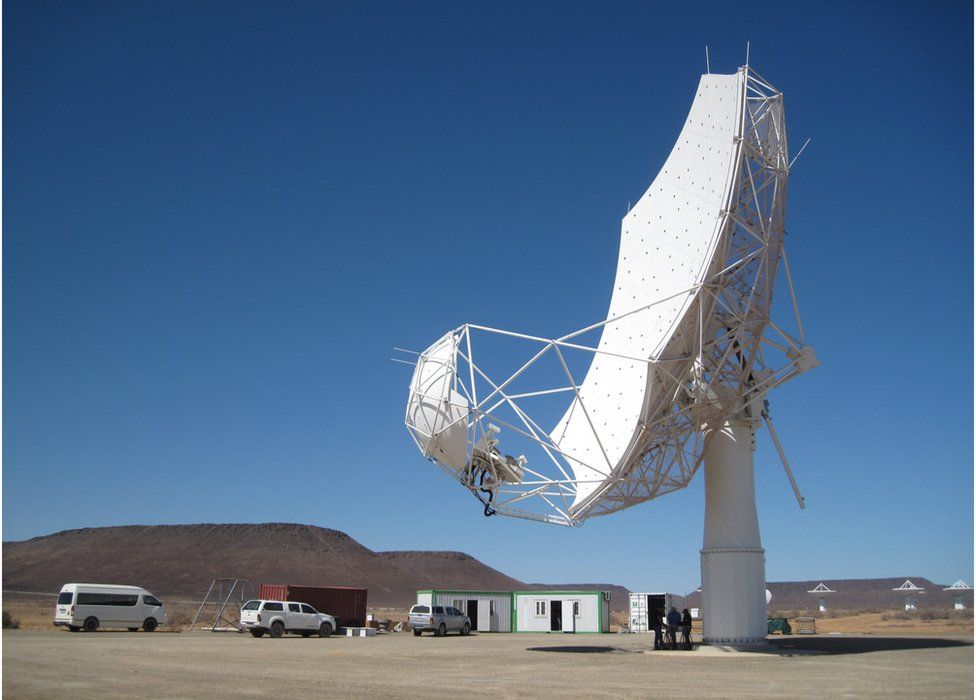South Africa is playing a pivotal role in constructing the world’s biggest radio telescope, the Square Kilometer Array (SKA). The first of 133 massive parabolic dishes destined for the South African segment of the SKA is nearing completion, with its installation anticipated in the coming weeks.
A Multi-Nation Effort for Groundbreaking Science
This ambitious $3 billion project, launched in December 2022, is a collaborative effort involving numerous countries, including China, Australia, Canada, and South Africa. South Africa itself has contributed approximately R1.1 billion to the project.
The SKA will revolutionize astronomy by providing unparalleled observation capabilities. Scientists aim to leverage this power to search for Earth-like planets potentially harboring life beyond our solar system. Additionally, the SKA will be instrumental in testing fundamental physics theories like gravity and probing the enigmatic dark energy that permeated the early universe.
Two Sites, One Goal: Unveiling Cosmic Secrets
The SKA will comprise two geographically separated sites, each boasting advanced technology for astronomical observations. The first site, situated in Australia’s Murchison Shire, will house 131,072 low-frequency antennas, operating in the 50MHz to 350MHz range. This site is aptly named SKA-Low due to its focus on lower frequencies.
South Africa’s contribution comes in the form of the SKA-Mid site, nestled in the Karoo region of the Northern Cape. This site will be equipped with 197 parabolic dishes, building upon the already existing MeerKAT array (which incorporates 64 dishes). MeerKAT has played a key role in several significant scientific discoveries in recent years.
The SKA-Mid dishes will boast a slightly larger size compared to their MeerKAT counterparts and will feature a unique curved hexagonal design, deviating from the circular shape of the MeerKAT dishes.
From Square Kilometers to Collecting Power
The name “Square Kilometer Array” originates from the initially envisioned collection area size several years ago. While the final design features a smaller overall collecting area (approximately 0.033 square kilometers) due to advancements in technology, the combined collecting power of the fully steerable dishes will be a remarkable 33,000 square meters.
A Global Collaboration Takes Shape
The SKA-Mid project represents a true international effort. Institutions from various countries, including China, Germany, and South Africa, all contributed to the design of the SKA-Mid dishes.

A prototype dish funded by the Max Planck Society was successfully installed in the Karoo back in 2018, paving the way for the current large-scale construction.
Dish Details: Technological Marvels
The SKA-Mid dishes, designed to operate in the 350MHz to 15.4GHz frequency range, are marvels of engineering. Each dish features the following key components:
- A massive 15-meter diameter main reflector, meticulously assembled from 66 individual curved panels, each measuring 3 meters.
- A sub-reflector positioned strategically below the main reflector.
- Multiple receiver types mounted on the sub-reflector, capable of adjusting their positions to capture signals across various frequencies.
- A feed indexer situated beneath the receivers, facilitating their movement for optimal signal capture.
- A robust pedestal for supporting the reflectors and receivers.
- Advanced fiber optic connections for transmitting data to dedicated off-site processing facilities.
These behemoths stand at an impressive six stories tall and weigh approximately 50 tonnes each. The various components are manufactured worldwide before being shipped to South Africa for assembly.
The Big Lift: A Momentous Occasion
The SKA Observatory (SKAO) has confirmed that components for the first two final-design dishes are already on-site, and assembly is well underway. The most anticipated event, the “big lift” – positioning the first dish’s reflector onto its pedestal – is expected to take place later in April or early May, barring unforeseen weather conditions.
A Growing Array: A Race Against Time (and Weather)
Currently, around 140 people are diligently working on the construction site. The SKAO anticipates this workforce to increase steadily as project activities ramp up. Their ambitious goal is to have the first four dishes and their associated systems fully operational by the end of 2024.
Challenges and Triumphs: Building a Global Telescope
The SKAO acknowledges the inherent logistical complexities of such a large-scale project. Factors like weather and global shipping pose potential challenges. For instance, parts for the dishes arrive in South Africa via Cape Town’s port, which has experienced unusually



















